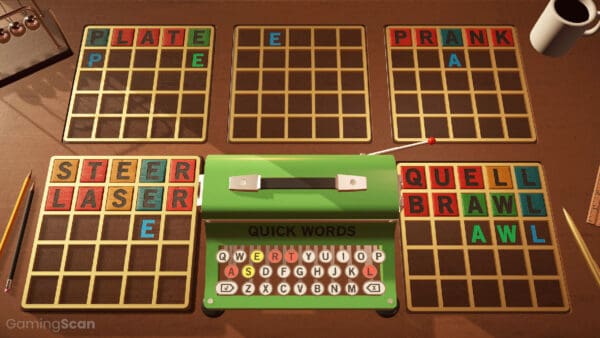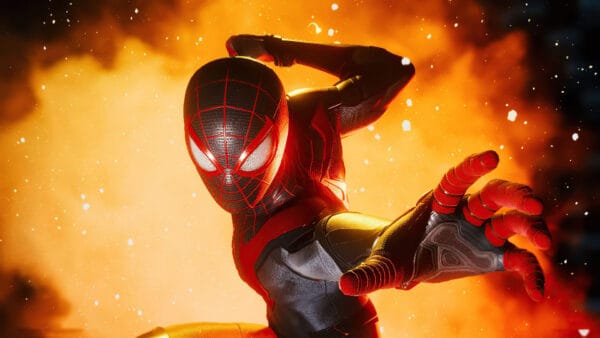Need for Speed first exploded onto the video game scene in the mid-1990s and quickly became one of the best racing game franchises around.
Initially, the series was developed in-house by Electronic Arts, who still retains ownership to this day but has changed developer hands throughout the years.
The two most notable studios to handle the property are Criterion, also known for the Burnout series, and Ghost Games.
Here, we’ve compiled a list of Need for Speed games in order of release, including the main series, spin-offs, and remakes.
Considering the franchise has seen a new game release almost every year for the past two decades, we’re in for a bumpy ride.
Table of ContentsShow
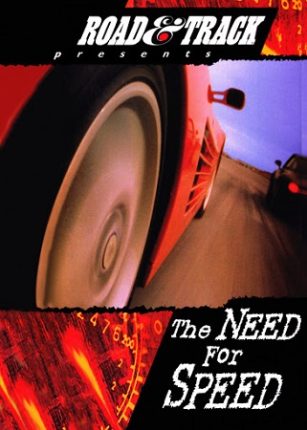
The Need for Speed
Release Date: August 31, 1994
Platforms: 3DO, DOS, PS1, Sega Saturn
Initially released for the 3DO game console, the original Need for Speed offered players high-speed thrills behind some of the flashiest sports cars money could buy.
While it wasn’t groundbreaking by any means, it managed to stand out by including a roster of licensed vehicles from iconic brands, a rarity at the time.
Each vehicle was highly-detailed with interiors and unique models based on its real-world counterpart.
This close attention to detail was ultimately met with glowing reviews from critics.

Need for Speed 2
Release Date: March 31, 1997
Platforms: Windows, PS1
Need for Speed 2 ditched the generic highways of the original in favor of unique courses that provided some much-needed personality.
This was accompanied by a ‘who’s who’ of 90s sports cars ranging from the McLaren F1 to Ferrari F50, Ford GT90, and Isdera Commendatore 112i.
Unfortunately, the game underperformed in the graphics department, particularly on PS1, making it difficult to truly appreciate its superb vehicle selection.
While later games look noticeably better, Need for Speed 2’s visuals have only gotten worse with age.
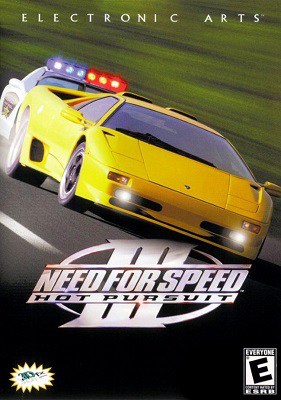
Need for Speed 3: Hot Pursuit
Release Date: March 25, 1998
Platforms: Windows, PS1
Hot Pursuit addressed its predecessor’s graphical shortcomings in a major way with striking visuals serving as a showcase for what the PS1 could do.
The game’s physics were significantly improved with revised tracks from NFS2 making an appearance.
However, the star of the show was the new Pursuit system, which saw Police units issuing tickets, placing roadblocks, and even popping players’ tires with spike strips.
These changes were well received by critics and fans, earning Hot Pursuit the cult status it still holds today.
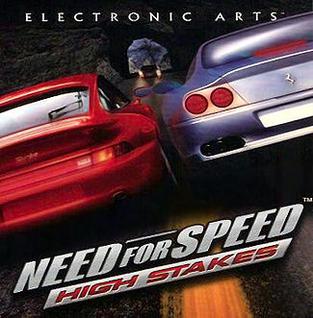
Need for Speed: High Stakes
Release Date: March 1, 1999
Platforms: Windows, PS1
The next Need for Speed game would expand upon the Pursuit system by building a full-fledged single-player campaign around the feature.
Additionally, for the first time in the series, players could outright buy cars and even race for pink slips.
While the game’s track selection wasn’t as refined, High Stakes was essentially more of Hot Pursuit with a couple of new features thrown in for good measure.
The game’s bloated campaign consisting of several multi-race championships made it hard to pick up and play but its quality performance garnered favorable reviews.
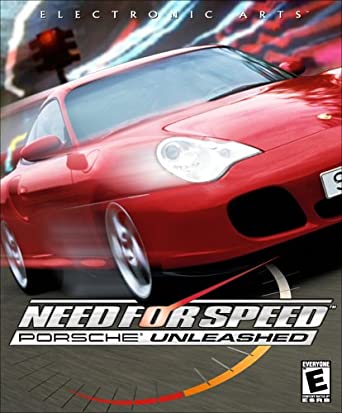
Need for Speed: Porsche Unleashed
Release Date: February 29, 2000
Platforms: Windows, PS1, GBA
Known as Porsche 2000 in certain parts of the globe, Porsche Unleashed was the first NFS game to shift its focus to a particular sports car brand.
It was very much a product of the time and stemmed from a 20-year exclusivity deal between EA and the car manufacturer Porsche.
The game’s roster was made up of notable vehicles from the German automaker, with the single-player campaign acting as a ‘greatest hits’ of Porsche’s legacy.
Although critics took issue with the abysmal handling and speed of the older Porsche models, it’s still regarded as one of the most ambitious Need for Speed games.
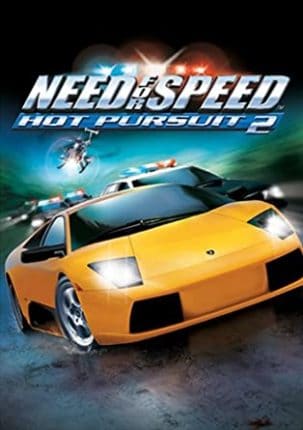
Need for Speed: Hot Pursuit 2
Release Date: October 2, 2002
Platforms: Windows, PS2, Xbox, GameCube
By now, EA had the NFS formula down to a science, making a sequel to Hot Pursuit an easy lay-up for the franchise.
Improving upon the original in just about every way, Hot Pursuit 2’s roster featured the most prestigious and luxurious supercars at the time.
The cars looked great, the tracks even better, and the physics were more responsive than ever before.
Despite some inconsistencies between the PS2 and other versions, Hot Pursuit 2 is a shining example of what makes arcade racers so much fun.

Need for Speed: Underground
Release Date: November 17, 2003
Platforms: Windows, PS2, Xbox, GameCube, GBA
Having exhausted the Hot Pursuit hype, EA tried to shake things up with Need for Speed: Underground, an edgier take on the formula modeled after tuner culture.
Instead of a selection of fancy supercars, players competed in racing events for cash, eventually saving up enough to unlock new vehicles or upgrades.
Additionally, each vehicle could be customized and outfitted with various spoilers, decals, tires, rims, paint jobs, and more.
Although not without its flaws, Underground was ultimately met with positive reviews.
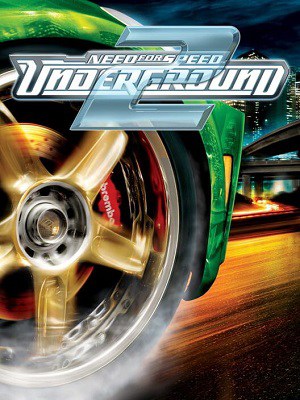
Need for Speed: Underground 2
Release Date: November 15, 2004
Platforms: Windows, PS2, PSP, Xbox, GameCube, DS, GBA
Expanding the scope of the original, Underground 2 added more events, vehicles, and customization options alongside open-world exploration.
This time around, there was a bigger emphasis on racing fundamentals, with the game offering some of the best handling of any game in the series.
While cop chases were noticeably absent, most of us were too busy decking out our Mitsubishi Eclipse and Nissan 240sx to even care.
Years later, the game is still remembered fondly and has even achieved cult status in some circles of gaming.

Need for Speed: Most Wanted
Release Date: November 15, 2005
Platforms: Windows, PS2, PSP, Xbox 360, Xbox, GameCube, DS, GBA
Arguably the most franchise-defining entry to date, Most Wanted was meant to bridge the gap between classic NFS and its edgier modern successors.
The end result was a cross between the tight handling and physics of the Underground games with the cop chases of Hot Pursuit 1 and 2.
Most importantly, Most Wanted set players loose in one of the best racing game open worlds of all time, Rockport.
While not the biggest sandbox by any means, the city provided an abundance of unique scenery, heated police chases, and hours of entertainment.

Need for Speed: Carbon
Release Date: October 31, 2006
Platforms: Windows, PS3, PS2, PSP, Xbox 360, Xbox, Wii, GameCube, Mac
Need for Speed: Carbon saw EA hitting yet another creative roadblock after releasing back-to-back hits.
In hopes of recreating the success of Most Wanted, it incorporated elements from Hot Pursuit and Underground while setting up a new street racing-inspired story.
The main issue with Carbon was it lacked the personality or charisma of any of the previous games it was attempting to mimic.
The mix of bland urban environments and a perpetually nighttime setting had both fans and critics yawning.
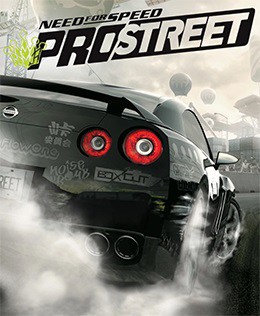
Need for Speed: ProStreet
Release Date: November 14, 2007
Platforms: Windows, PS3, PS2, PSP, Xbox 360, Wii, DS
Released at a time when racing sims were starting to rise in popularity, Need for Speed: ProStreet was meant to compete with the likes of Grid and Forza.
Instead of racing suped-up tuner cars across slick city streets in perpetual darkness, fans were treated to gritty circuit races on some of the best tracks in the series.
Highlights included Japan’s Autopolis and Ebisu circuits, Portland International Raceway, and the Avus loop in Germany.
The only issue was EA’s lack of experience with developing a more sim-based racing game, resulting in inconsistent physics that made some vehicles impossible to steer.

Need for Speed: Undercover
Release Date: November 18, 2008
Platforms: Windows, PS3, PS2, PSP, Xbox 360, Wii, DS
After the failure that was ProStreet, EA returned to the drawing board before landing on Need for Speed: Undercover.
The game was a desperate attempt at recapturing the rebellious attitude that permeated earlier entries and, in that respect, was somewhat successful.
However, in just about every other category, Undercover was a far cry from the glory days of Hot Pursuit and Underground.
From its generic open world to an uninspired campaign and lackluster graphics, the game didn’t come even close to meeting fans’ expectations.
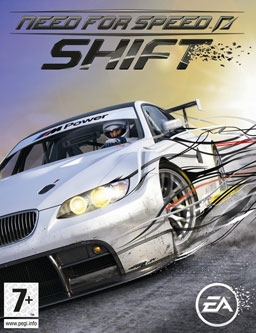
Need for Speed: Shift
Release Date: September 15, 2009
Platforms: Windows, PS3, PSP, Xbox 360
Considered a spin-off to the mainline games, Need for Speed: Shift was a much more successful attempt at drawing in racing sim aficionados.
Development was outsourced to Slightly Mad Studios, best known for the Project CARS franchise, and resulted in one of the best NFS games to date.
Need for Speed: Shift was able to deliver satisfying touring-car simulation racing without falling into any of the pitfalls ProStreet had encountered.
Vehicle handling was superb, graphics were impressive, and the career mode would scale according to your current skill level.

Need for Speed: Nitro
Release Date: November 3, 2009
Platforms: Wii, DS
With more serious racing sim fans taken care of, EA set their sights on casual audiences with their next spin-off, Need for Speed: Nitro.
The Wii version was developed internally by EA Montreal while Firebrand Games was tapped to produce a modified DS port.
As you would expect, the game prioritized Speed and excitement over realistic driving mechanics.
To better fit the Wii and DS hardware, Nitro featured a more cartoony art style that helped give it a ‘family-friendly’ aesthetic.

Need for Speed: World
Release Date: July 27, 2010
Platforms: Windows
The next spin-off would be an ambitious multiplayer-driven experience in the form of Need for Speed: World.
Presented as an online always racing MMO, the game was very much ahead of its time, which also played a role in its inevitable demise.
Essentially a cross between Most Wanted and Carbon, NFS World offered an assortment of activities that connected you with other racers in real time.
To account for the increased player population, it featured a larger open world that merged the best parts of Hot Pursuit’s Rockport City with Palmont from NFS Carbon.
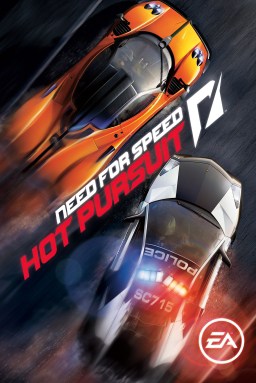
Need for Speed: Hot Pursuit (2010)
Release Date: November 16, 2010
Platforms: Windows, PS3, Xbox 360, Wii
By this point, the franchise’s glory days were in EA’s rearview, and the industry had moved on to account for the growing interest in more sim-based racers.
Desperate to bring back fans, they entrusted Criterion Games of Burnout fame to create a remake of 1998’s Hot Pursuit.
Although the updated version didn’t quite live up to its predecessor’s name, it did modernize the NFS formula while benefitting from the Hot Pursuit branding.
Environments were more prominent and detailed than ever before, and gameplay felt satisfying aside from a handful of technical hiccups.
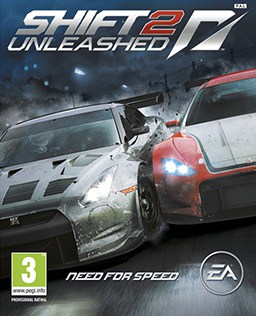
Shift 2: Unleashed
Release Date: March 29, 2011
Platforms: Windows, PS3, Xbox 360
For their next release, EA had Slightly Mad produce a sequel to Need for Speed: Shift that sought to distance itself from the main series even further.
Shift 2: Unleashed expanded upon many aspects of the original while doubling down on its commitment to true-to-life racing.
To this point, the game features dynamic crash physics along with highly-detailed models of real-world cars, drivers, and tracks.
It ended up being a success, with critics praising refinements over the first game and overall close attention to detail in its vehicle and track designs.
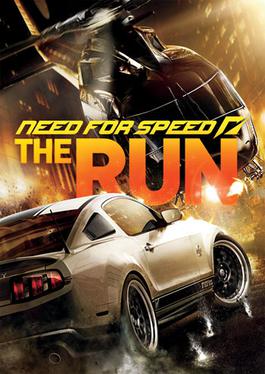
Need for Speed: The Run
Release Date: November 15, 2011
Platforms: Windows, PS3, Xbox 360, Wii, DS
Much like NFS: World, The Run was simply too ambitious for its time and didn’t offer the kind of experience fans had come to expect from the series.
Instead of churning out yet another circuit racing campaign, the game narrowed its scope to one single long interstate chase spanning coast to coast.
While there was some novelty to the general idea, the campaign’s brisk four-hour run time didn’t go over well with fans.
Even worse was the fact that most of that time was spent watching cutscenes, playing out scripted moments, and completing non-driving QTEs.

Need for Speed: Most Wanted (2012)
Release Date: October 30, 2012
Platforms: Windows, PS3, PS Vita, Xbox 360, Wii U, Android, iOS
After the success that was 2010’s Hot Pursuit remake, Criterion got to work on a remake of another series highpoint, Need for Speed: Most Wanted.
Yet again, the game was less of a 1:1 remake of the original but rather a reimagined NFS title with some Burnout Paradise attitude sprinkled on top.
The campaign was reduced in length, car customization was completely absent, and aggressive AI rubberbanding made races feel unfair to the point of frustration.
It’s a shame the game wasn’t given the development time it needed considering how much fans admire the original.

Need for Speed Rivals
Release Date: November 15, 2013
Platforms: Windows, PS4, PS3, Xbox One, Xbox 360
Released as a cross-generational title for PS, Xbox, and PC platforms, Need for Speed Rivals is considered to be one of the more underrated entries in the series.
It was the first NFS developed by Ghost Games, the studio that would go on to make 2019’s Need for Speed Heat.
While sacrifices were made to ensure console compatibility, all respective versions have aged remarkably well in regard to graphics and load times.
Sure, the campaign was a bit hollow, but at its core, Rivals offered a solid arcade racer with all the bells and whistles you’d expect.
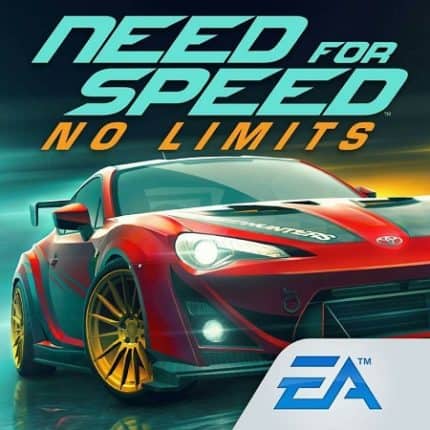
Need for Speed: No Limits
Release Date: September 30, 2015
Platforms: iOS, Android
Developed by Firemonkeys Studios, Need for Speed: No Limits was a stripped-down version of a traditional NFS game that featured fully 3D graphics.
It incorporated many elements from previous games, such as illegal street races, police pursuits, and car customization.
However, its aggressive free to play model was ultimately panned by critics for gatekeeping much of the game’s content.
Additionally, races were cut short and operated on a timer to manipulate you into spending real-world money.
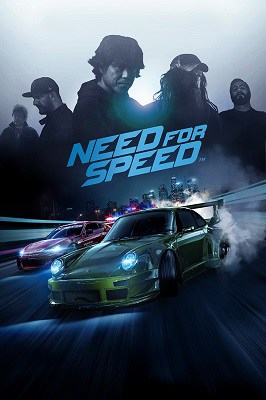
Need for Speed (2015)
Release Date: November 3, 2015
Platforms: Windows, PS4, Xbox One
Serving as a soft reset for the series, 2015’s Need for Speed was meant to mark the start of a new generation with Ghost Games and EA leading the charge.
The vision was clear: they wanted to create a definitive NFS experience that boasted superb visuals and the most robust customization engine the series had ever seen.
Unfortunately, this prioritization meant that other parts of the game would go underserved, namely vehicle handling.
Thankfully, fans forgot about it rather quickly, and EA quietly tossed it on the growing pile of failed NFS reboots.
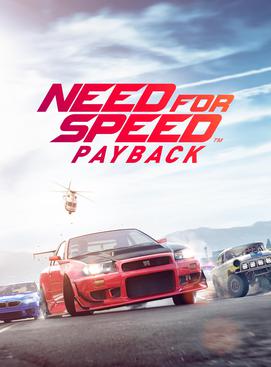
Need for Speed Payback
Release Date: November 10, 2017
Platforms: Windows, PS4, Xbox One
If 2015’s reboot rubbed some players the wrong way, Payback was a total slap in the face for anyone who still considered themselves a NFS fan.
The game was nothing more than a soulless cash-grab that rested entirely on the Fast & Furious movie franchise’s popularity.
To make matters worse, Ghost Games repeated many of the same mistakes they had made with 2015’s NFS reboot.
There was an over-reliance on scripted chases and a new card upgrade system that felt both overly complicated and predatory.
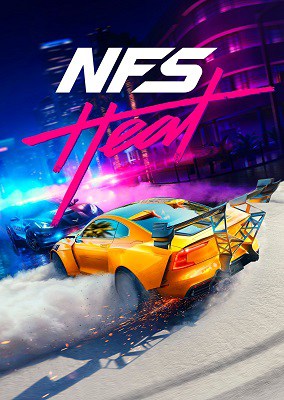
Need for Speed Heat
Release Date: November 8, 2019
Platforms: Windows, PS4, Xbox One
Need for Speed Heat would be the last project to come out of Ghost Games before EA had them converted into a Frostbite engineering studio.
While not the worst NFS by any means, it’s definitely far from the franchise’s golden age during the early to mid-2000s.
Upon release, Heat received mostly mixed reviews from critics, no doubt due to the bad taste left behind by the recent NFS reboot and Payback.
That being said, it featured several improvements over its predecessors and sparked new interest in the franchise.

Need for Speed Unbound
Release Date: December 2, 2022
Platforms: Windows, PS5, Xbox Series X/S
Serving as the 25th installment, Need for Speed Unbound was developed by Criterion Games after having stepped away from the franchise for almost a decade.
The biggest difference between this game and previous entries is a new comic book art style that blends cel-shading with graffiti effects and a touch of realism.
Gameplay maintains the open-world design of past outings alongside the Heat system from NFS Heat and expanded vehicle customization.
Reviews for the game differ significantly based on the platform, with the console versions being more favorably received than the PC version.


